#stegosaurian
Text
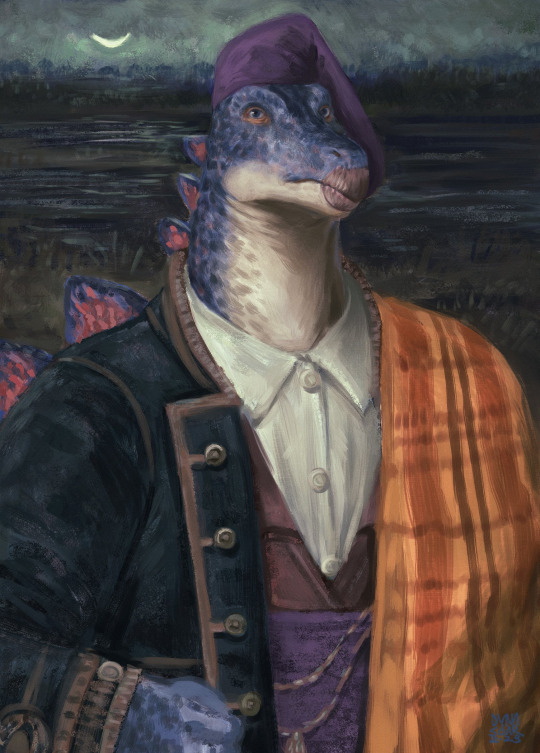



guys with beaks
#art#painting#digital art#digital painting#dinosaur#saurian#anthro#furry#furry art#anthro art#scalie#ceratopsian#stegosaurian#edmontosaur#hadrosaur#ornithischian#fantasy art#dynasoar5#ssohardd
240 notes
·
View notes
Text
Dinofact #37
Huayangosaurus was an incredibly early stegosaurian, possibly the earliest known. Huayangosaurus fossils can be dated back 165 million years, some 20 million years prior to when Stegosaurus lived. At only 4 metres (13 feet) long, Huayangosaurus is also one of the smallest stegosaurians known.
Source: wikipedia [1], [2]
#dinosaurs#dinosaur#paleontology#huayangosaurus#stegosaurus#stegosaurian#stegosaurians#stegosauria#fun facts#trivia#dinosaur trivia#dinosaur fun facts#30th#september#2022#september 30th#september 2022#september 30th 2022
30 notes
·
View notes
Text
fudendo novinho magrinho no mato sneakers converse all star fudendo novinho skinny in the woods sneakers converse all star
Anilingus and a Russian student fuck in the ass from the first person
Hot girl anal clean ass
Gagged cutie is hoisted up previous to hard pussy prodding
Tamaki Kotatsu FireForce 3D Hentai 1/6
Niamilkmarie Hairy Milky Pussy
Army medical test video and of boys nude with doctor gay He commenced
Teen Snapchat read description
Sweet chick gets her pussy fucked during stripper party
Real teen aussie rubbing
#willow-herb#fantasizes#monopolise#hyperacute#multicentrally#commodores#indissolute#anticivil#dumdums#stegosaurian#down#foamers#valve#grammatically#tobacconistical#reemerges#vergership#babirussa#cakier#civil-law
0 notes
Text
Dacentrurus

Dacentrurus is a stegosaurian dinosaur from the Late Jurassic to Early Cretaceous, discovered in what is now England. Dacentrurus was one of the largest stegosaurs, with some specimens estimated to reach up to 9 m in length, and weighing around 5 t. Though finds of this animal have been limited and much of its appearance is uncertain, it was a heavily built quadrupedal herbivore with plates and spikes along its back.
86 notes
·
View notes
Text
Thyreosaurus atlasicus Zafaty et al., 2024 (new genus and species)

(Armor plates of Thyreosaurus atlasicus [scale bars = 5 cm], from Zafaty et al., 2024)
Meaning of name: Thyreosaurus = shield lizard [in Greek]; atlasicus = from the Atlas Mountains
Age: Middle Jurassic (Bathonian–Callovian?)
Where found: El Mers III Formation, Fès-Meknès, Morocco
How much is known: Partial skeleton of one individual including several vertebrae, ribs, armor plates, and a limb bone.
Notes: Thyreosaurus was a stegosaur, possibly closely related to Adratiklit, which is also known from the Middle Jurassic of Morocco, and Dacentrurus from the Late Jurassic–Early Cretaceous of Europe. The type specimen is estimated to have been about 6 m long in total body length, but had not finished growing when it died.
The armor plates of Thyreosaurus were unusual in that they exhibit a cross-hatched texture on one side. In other armored dinosaurs, similar textures are generally found at the base of bony armor where it is embedded into their skin. The describers of Thyreosaurus thus suggest that these plates lay flat against its body, instead of standing vertically as is typical of back plates in other stegosaurs.
Reference: Zafaty, O., M. Oukassou, F. Riguetti, J. Company, S. Bendrioua, R. Tabuce, A. Charrière, and X. Pereda-Suberbiola. 2024. A new stegosaurian dinosaur (Ornithischia: Thyreophora) with a remarkable dermal armour from the Middle Jurassic of North Africa. Gondwana Research advance online publication. doi: 10.1016/j.gr.2024.03.009
43 notes
·
View notes
Note
can i have a fish :)
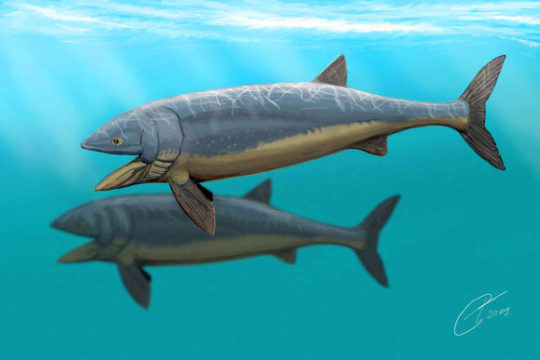
Heaven gained another "angelfish" today, as we mark the passing of Leedsicthys problematicus, nicknamed "Ariston", everyone's prehistoric problematic fav. At birth, she was considered to be the back plates of a stegosaurian, Omosaurus, but in 1889 was determined to be a fish, actually, a distinction that should not have been particularly difficult. Later in her life, she was again mistaken for part of an Omosaurus, resulting in her modern "problematic" nature. Even after that, she was again mistaken for another stegosaur, making her the most stegosaurian non-stegosaur to ever walk swim this Earth. Known for being one of the largest fish alive, Ariston is survived by her close relatives, among them every other ray-finned fish to exist.
175 notes
·
View notes
Text
Round Two: Stegouros vs Spicomellus
Stegouros elengassen
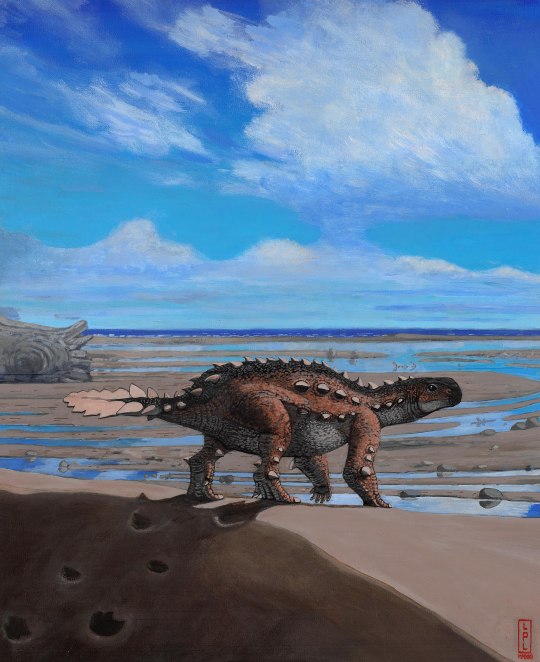
Artwork by Luis Enrique Pérez López, written by @zygodactylus
Name Meaning: Armored Creature with a Roofed Tail
Time: 74.9 to 71.7 million years ago (Campanian to Maastrichtian stages of the Late Cretaceous)
Location: Dorotea Formation, Patagonia, Chile
South America is just where the nonavian dinosaur party is happening these days! Stegouros is another recently described species from this continent, and another weird one - it was an Ankylosaur, but not a Nodosaur or an Ankylosaurid, and more to the point, instead of a tail club it had a series of vertebrae enclosed in osteoderms, in a shape that looked a lot like a macuahuitl - the tail was also very short, shorter than any other Thyreophoran, with flattened vertebrae coming together to form the strange and distinctive shape (similar short vertebrae are known from its relative, Antarctopelta). At around 2 meters long, it was very small for an Ankylosaur, though it had a head that was quite large for its body. It also had inward curving teeth, making them look vaguely hourglass-shaped, though they were also asymmetrical. It had many typical ankylosaur traits, but also some stegosaurian ones such as hollow sides to their vertebrae. Overall, it was very similar in proportions and appearance to Antarctopelta, indicating Antarctopelta may have looked more like Stegouros than previously thought. It had limb bones similar to cursorial Ankylosaurs, indicating Stegouros itself was a fast and efficient mover; and it even had claws shaped like hooves which may have enabled even more efficient running and locomotion. So, yeah. A short big headed ankylosaur built for running with a freaking ax on its tail. That’s normal! Living in the Dorotea Formation, Stegouros probably lived near the coast, alongside different sorts of mammals, fish, bivalves, amphibians, plesiosaurs, turtles, and unnamed dinosaurs such as opposite birds, megaraptors, Unenlagiines, and possible titanosaurs.
Spicomellus afer
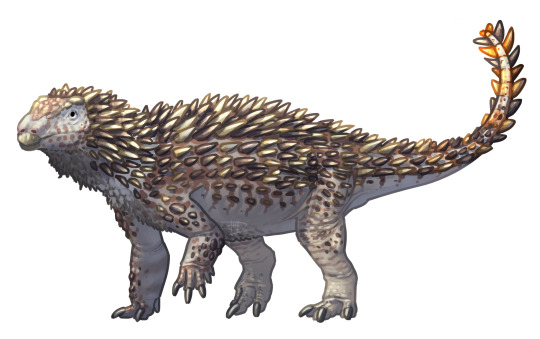
Artwork by @i-draws-dinosaurs, written by @zygodactylus
Name Meaning: African Collar of Spikes
Time: 168 to 164 million years ago (Bathonian to Callovian stages of the Middle Jurassic)
Location: Third Subunit, El Mers Group, Fès-Meknès, Morocco
Spicomellus is the oldest known Ankylosaur, and also the first described Ankylosaur from North Africa! But that isn’t even the weirdest thing about it! Spicomellus had dermal spikes, fused to the bone, forming a collar (for which it was named) around its neck. Given that the spike were fused to the underlying bone - something no other ankylosaur does - it is probable that it wouldn’t have had a particularly flexible neck, or an easy time moving in general if the pattern continued throughout the body. It probably would have been around 3 meter long at the most, similar in size to other ankylosaurs from the Middle Jurassic. Coming from the El Mers Group, i tlived alongside Cetiosaurus, the stegosaur Adratiklit, megalosaurs, and teleosaurids. Spicomellus adds to a growing diversity of Jurassic Ankylosaurs, showing how Ankylosaurs and Stegosaurs lived alongside each other for a large period of time (the Middle and Late Jurassic epochs) and that the extinction of the Stegosaurs must have been due to a different, unrelated factor.
#dmm#dinosaur march madness#dinosaurs#birds#dmm rising stars#dmm round two#birblr#palaeoblr#paleontology#bracket#march madness#polls#stegouros#spicomellus
211 notes
·
View notes
Photo

Hi there!
Day 2: Huayangosaurus taibaii from the Middle Jurassic, one of the first stegosaurian, found in China
348 notes
·
View notes
Text
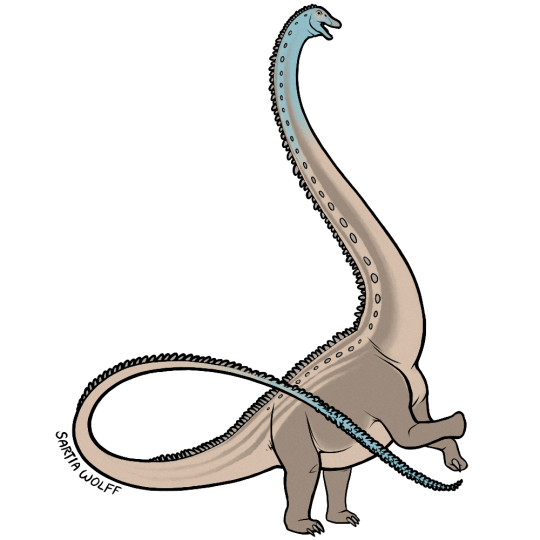
#Archovember Day 7 - Supersaurus vivianae
Living in Late Jurassic North America, the diplodocid Supersaurus vivianae was one of the largest and longest sauropods to ever exist. With larger specimens reaching 33–35 metres (108–115 ft) long and weighing an estimated 35–40 metric tons (39–44 short tons), it was matched only by the Late Cretaceous titanosaur Argentinosaurus.
As a diplodocid, Supersaurus would have used it’s long, peg-like teeth to strip food from branches and swallow it without chewing, instead relying on gastroliths (small stones) to break down plant material in its gizzard. Due to the high stress stripping branches would place on its teeth, diplodocids continuously replaced their teeth throughout their lives, usually in less than 35 days! Supersaurus could have had as many as 5 teeth developing per tooth socket.
Supersaurus, like other diplodocids, had a long, whiplike tail which tapered at the end. They could have snapped this tail like a bullwhip, generating a sonic boom. This could have been used in mating displays or to ward off predators.
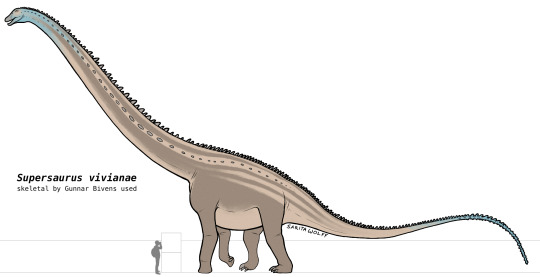
Being the largest animals living at the time, there weren’t many, if any, predators in the Morrison Formation that could have preyed on adult Supersauruses. However, young Supersauruses would have had a multitude of large theropods to look out for, including Allosaurus, Saurophaganax, Ceratosaurus, Torvosaurus, and Marshosaurus. Supersaurus would have lived alongside a variety of other sauropods such as Haplocanthosaurus, Smitanosaurus, Amphicoelias, Apatosaurus, Brontosaurus, Diplodocus, Brachiosaurus, Camarasaurus, Dystrophaeus, and the rare Barosaurus. There were a lot of Ornithischians in this formation as well, though not as numerous and diverse as the sauropods. They included the early ornithopods Camptosaurus, Dryosaurus, Nanosaurus, and Uteodon, the stegosaurians Alcovasaurus, Hesperosaurus, and Stegosaurus, the ankylosaurians Gargoyleosaurus and Mymoorapelta, and the heterodontosaur Fruitadens.
#my art#SaritaDrawsPalaeo#Supersaurus#Supersaurus vivianae#diplodocid#sauropods#saurischians#dinosaurs#archosaurs#archosauromorphs#reptiles#Archovember#Archovember2023
22 notes
·
View notes
Text



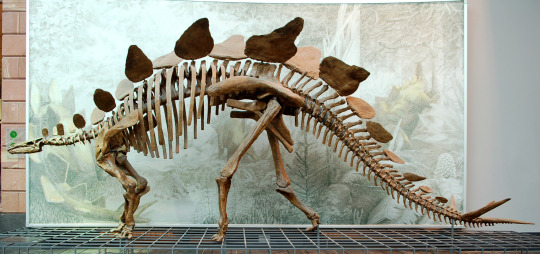
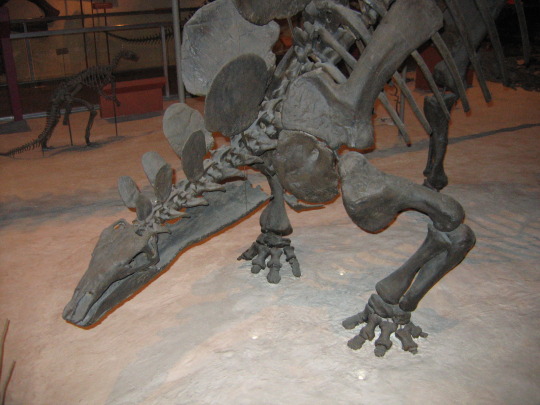



Stegosaurus
(temporal range: 155-145 mio. years ago)
[text from the Wikipedia article, see also link above]
Stegosaurus (/ˌstɛɡəˈsɔːrəs/;[1] lit. 'roof-lizard') is a genus of herbivorous, four-legged, armored dinosaur from the Late Jurassic, characterized by the distinctive kite-shaped upright plates along their backs and spikes on their tails. Fossils of the genus have been found in the western United States and in Portugal, where they are found in Kimmeridgian- to Tithonian-aged strata, dating to between 155 and 145 million years ago. Of the species that have been classified in the upper Morrison Formation of the western US, only three are universally recognized: S. stenops, S. ungulatus and S. sulcatus. The remains of over 80 individual animals of this genus have been found. Stegosaurus would have lived alongside dinosaurs such as Apatosaurus, Diplodocus, Camarasaurus and Allosaurus, the latter of which may have preyed on it.
They were large, heavily built, herbivorous quadrupeds with rounded backs, short fore limbs, long hind limbs, and tails held high in the air. Due to their distinctive combination of broad, upright plates and tail tipped with spikes, Stegosaurus is one of the most recognizable kinds of dinosaurs. The function of this array of plates and spikes has been the subject of much speculation among scientists. Today, it is generally agreed that their spiked tails were most likely used for defense against predators, while their plates may have been used primarily for display, and secondarily for thermoregulatory functions. Stegosaurus had a relatively low brain-to-body mass ratio. It had a short neck and a small head, meaning it most likely ate low-lying bushes and shrubs. One species, Stegosaurus ungulatus, is one of the largest known of all the stegosaurians, reaching 7 metres (23 ft) in length and 3.8 metric tons (4.2 short tons) in body mass, and some specimens indicate an even larger body size.
Stegosaurus remains were first identified during the "Bone Wars" by Othniel Charles Marsh at Dinosaur Ridge National Landmark. The first known skeletons were fragmentary and the bones were scattered, and it would be many years before the true appearance of these animals, including their posture and plate arrangement, became well understood. Despite its popularity in books and film, mounted skeletons of Stegosaurus did not become a staple of major natural history museums until the mid-20th century, and many museums have had to assemble composite displays from several different specimens due to a lack of complete skeletons. Stegosaurus is one of the better-known dinosaurs and has been featured in film, on postal stamps, and in many other types of media.
10 notes
·
View notes
Text
Hunting Dinosaurus Jurassic World Evolution2 T-Rex Velocyraptor Stegosaurus Kentrosaurus Octopus
youtube
Hunting Dinosaurus Jurassic World Evolution2 T-Rex Velocyraptor Stegosaurus Kentrosaurus Octopus #Jurassicworldevolution2 #Jurassicworld #Jurassic #Velociraptor #TRex #AnimalRevolt #truck I love Dinosaurs and my channel give you the information about them. Thank you for watching. The stegosaurian Kentrosaurus is an herbivorous dinosaur that can grow up to 4m in length and weigh over 700kg. Like many other stegosaurian dinosaurs, Kentrosaurus is well protected from predators, with armour plates that run the length of its back and a pair of spikes that jut out from its shoulders. It also has a long, spiked tail that helps it to fend off attackers. 🔴 Disclaimer : This video contains content for an adult audience over 13 years old. We did not create this content specifically for children, watching this video means agreeing to youtube rules NOT FOR CHILDREN. Please click subscribe & Hit the bell icon ;) 🔴 Do not Re-up my videos to anywhere. Thank you!
#Jurassic world evolution 2#Jurassic world#Jurassic park#Jurassic#world evolution 2#Dinosaurus#amargasaurus#Sarcosuchus#zebra#Truck#T-rex#indoraptor#Spinosaurus#Triceratops#Velociraptor#giganotosaurus#Stegosaurus#Pteranodon#dilophosaurus#indominus rex#dracorex#Brachiosaurus#king kong#Gorilla#lion#Therizinosaurus#Crocodile#black panther#styracosaurus#Ankylosaurus
2 notes
·
View notes
Text
SPEAKING OF GREGORY, I totally saw dinosaurian influences in his design and y’know what? We need more of that shit!!! The stegosaurian back plates, the shape of the head, the back limbs, it was... uncanny to me. I love him, I love gargoyles in this show, they’re adorable! ToT
15 notes
·
View notes
Text
Dinofact #111
Originally thought to be a very primitive stegosaurian, current cladistic analysis places Kentrosaurus as one of the most derived stegosaurs, and a close relative to Stegosaurus.
Source: Wikipedia
#dinosaur#dinosaurs#paleontology#kentrosaurus#stegosaurus#stegosauria#stegosaurian#stegosaurians#stegosaur#stegosaurs#stegosaurid#stegosaurids#stegosauridae#fun facts#trivia#dinosaur trivia#dinosaur fun facts#27th#december#2022#december 27th#december 2022#december 27th 2022
16 notes
·
View notes
Text
March Madness Championship!
Welcome to our championship showdown: Stegosaurus vs Brachiosaurus! Let's take a look at our competitors!

STEGOSAURUS
Found during the infamous Bone Wars
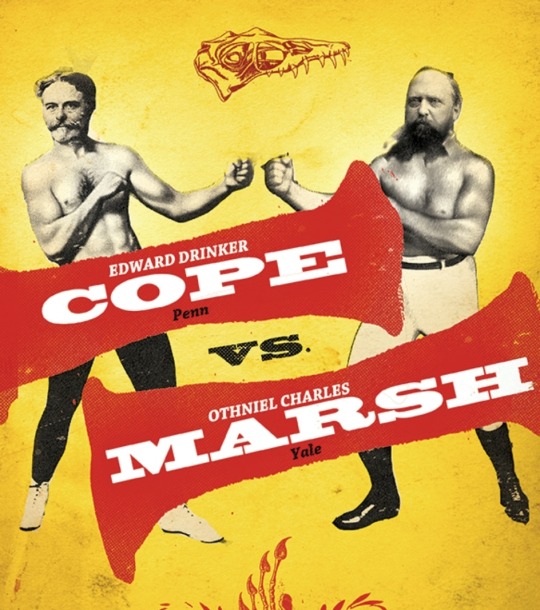
by a geologist names Arthur Lakes
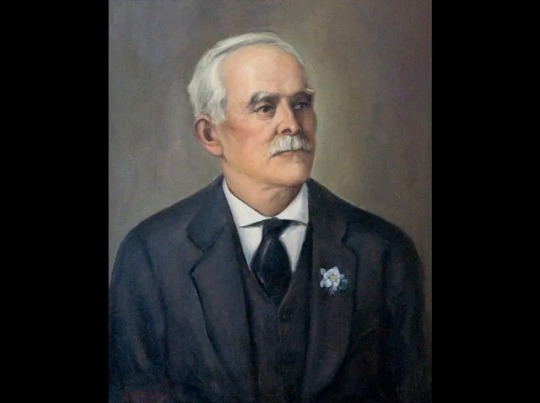
In Morrison, Colorado (yes, home of Red Rocks Ampitheater)

And namesake of the Morrison Dormation which Stegosaurus was found in. It was drscribed by Othniel Charlea Marsh as S. armatus (now an dubious species).

Nice beard my dude. Marsh gave it the name "roof lizard" because he thought it was a relative of turtles.

He thought it wad bipedal due to its short front legs, aquatic and that its plates laid across it's back like shingles on a roof.
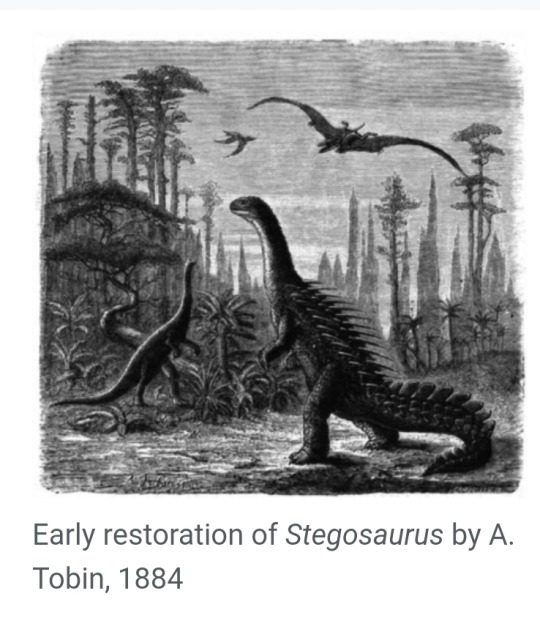
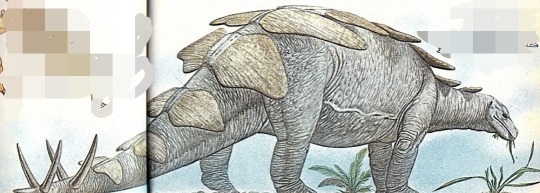
At around the same time, Marsh's rival, Edward Drinker Cope

Named a new stegosaurian

It was based off this piece of dermal armor:
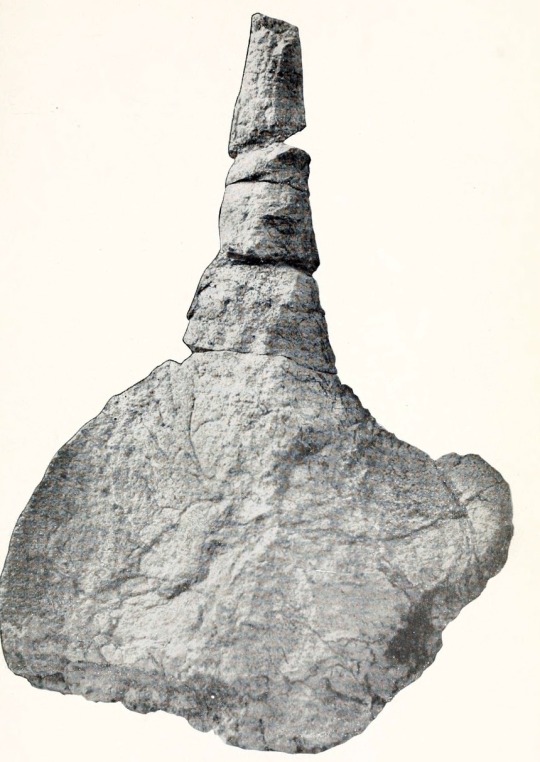
Found in a quarry called "Cope's Nipple" i. Garden Park. (Marsh definitely was behind the name. They pulled that crap on each other all the time). It is now considered a different genus called Hoplitosaurus which is closer to Polacanthosaurus.
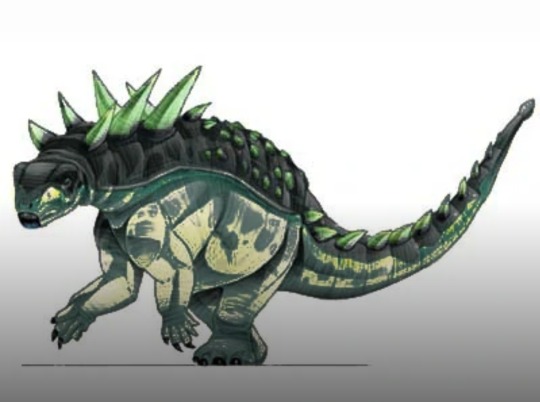
The most important find came from Garden Park in a separate quarry. There, farmer Marshall Parker Felch found a nearly conplete, articulated subadult with undiscovered parts: a complete skull, gular armor and articulated plates. It has since become the type species for S. stenops. It had been on display at the National Museum of Natural History in D.C. since 1915. Despite it being one of the most famous dinosaurs, it was not regularly on display in museums until halfway through the 20th century.
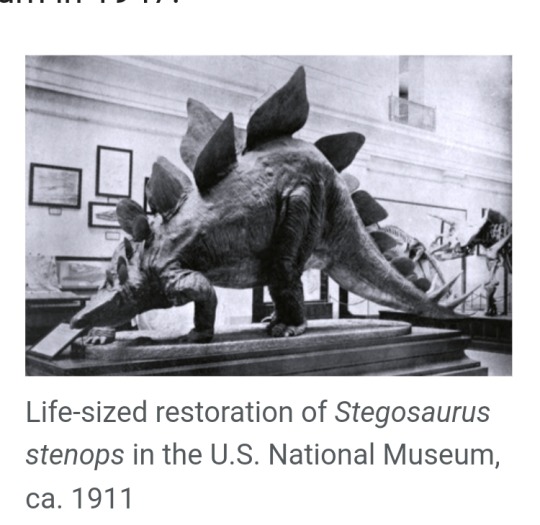

It has appeared in many films starting on the 1933 film, King Kong. My personal favorite is Spike in the Land Before Time.
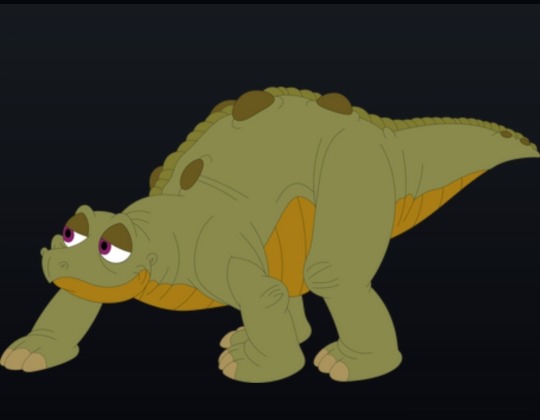

So, if you want Stegosaurus to win vote in the comments of by liking this post!
0 notes
Text
Huayangosaurus
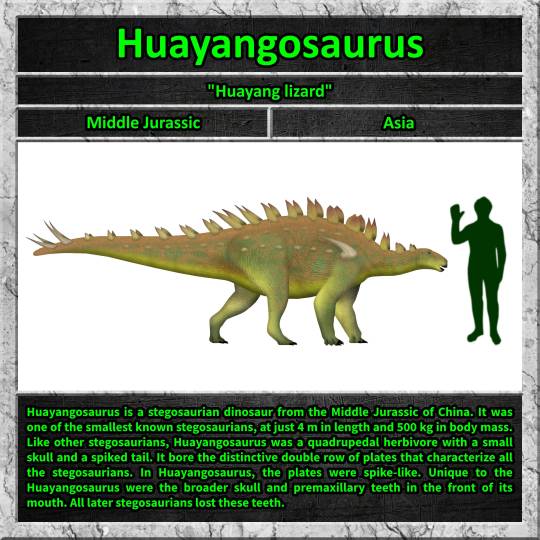
Huayangosaurus is a stegosaurian dinosaur from the Middle Jurassic of China. It was one of the smallest known stegosaurians, at just 4 m in length and 500 kg in body mass. Like other stegosaurians, Huayangosaurus was a quadrupedal herbivore with a small skull and a spiked tail. It bore the distinctive double row of plates that characterize all the stegosaurians. In Huayangosaurus, the plates were spike-like. Unique to the Huayangosaurus were the broader skull and premaxillary teeth in the front of its mouth. All later stegosaurians lost these teeth.
107 notes
·
View notes
Text
Dinosaur Exhibition 2022
For celebrating the 25th Anniversary of the establishment of the Hong Kong Special Administrative Region, a free large-scale dinosaur exhibition is being staged in the Hong Kong Science Museum. Sponsored by the Hong Kong Jockey Club, “The Big Eight – Dinosaur Revelation” has been the biggest exhibition specialized in fossilized prehistoric creatures in Hong Kong, showcasing eight reconstructed skeletons of the colossal beasts, including the mightiest land predator Tyrannosaurus Rex and the sky master Hatzegopteryx.
Spending a year to prepare for the exhibition project, weighing over 20 tons of primeval fossils were flown into Hong Kong from museums and academic institutes around the world, including Germany, Switzerland, Italy, the Netherlands, Romania, and Morocco. Taking three weeks to assemble the fossils of the eight titans, some of the most awe-inspiring dinosaur specimens are on display in a 22,000 square feet large exhibition hall.
By entering the exhibition hall, what immediately leaps to the eyes is a gigantic Diplodocus. Its fossils date back as far as the late Jurassic period, 150 million years ago. With high level of fossil completeness, the skeletons of the dinosaurs were recreated as faithful as possible to their original structures and shapes. In terms of bone count, the fossil completeness of the exhibited Allosaurus is as high as 99 percent! Another dinosaur with near-complete fossil skeletons is Hesperosaurus. It is an herbivorous stegosaurian dinosaur with notable bone plates on its back. The reconstructed skeleton of a Triceratops was suggested as one of the largest ceratopsian dinosaurs ever found. Among all the exhibits, the most spectacular one must be the enormous Spinosaurus. It is a kind of semiaquatic carnivore living both on land and in water just like modern crocodiles do. Besides the huge reptiles, some volleyball-sized dinosaur eggs are on presented as well.
Not only can the visitors observe the dinosaur skeletons from a distance, but also to touch an authentic Sauropod leg bone by themselves. It is a fantastic way to experience the prehistoric nature. In addition, children are welcome to visit the Dino Lab where they can do some simple dinosaur bone scanning and reassemble small scale dinosaur models.
The exhibition offers a golden opportunity to every Hong Kong citizen to take a journey back in time to a prehistoric world. Since dinosaurs were extinct due to rapid global climate change, everyone of us should take very serious about global warming, extreme weather events and biodiversity loss. Conserving biodiversity on Earth and living in a sustainable way are the basic responsibility we all need to keep in the forefront of our minds.
0 notes